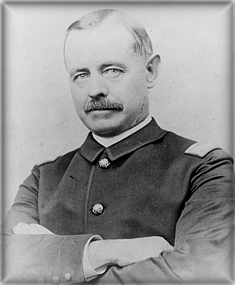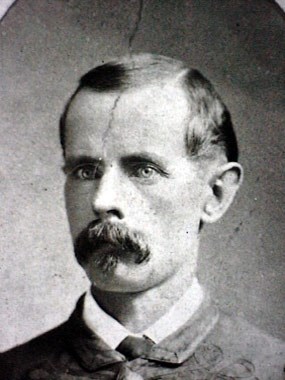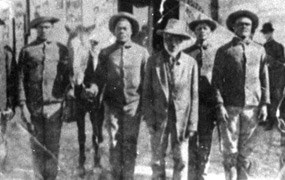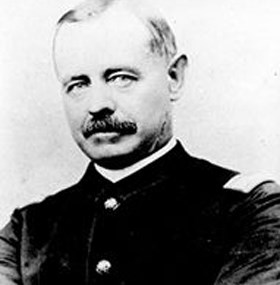
Property raids and territory disputes were a fact of everyday life in the borderlands of post-Civil War Texas, but the federal government was determined to put a stop to. Five years of upheaval had resulted in a loss of land along the southern border and frequent attacks on settlers. To combat these problems, military forts sprang up throughout Texas in the decade following the Civil War and armed U.S troops made regular patrols. One of the most well-known of the patrolling groups was the Seminole Negro Indian Scouts out of Fort Clark, Brackettville, Texas. Remembered for their toughness and skill as trackers, it is their courage that has brought them the most recognition. And nowhere would those traits be more in evidence than during the Pecos River skirmish of April 25, 1875. On that spring morning Lieutenant John L. Bullis, along with Seminole Scouts Sergeant John Ward, Private Pompey Factor, and Trumpeter Isaac Payne had been in hot pursuit of a band of Comanche or Apache raiders for just over a week. Though originally riding with Company A of the 25th Infantry the four men had separated from the larger group a few days earlier and headed west alone. On horseback, armed only with Spencer carbines and dwindling supplies, Bullis and his men would track the raiders for the next three days and cover more than 170 miles before finally picking up fresh trail markings about three miles east of present-day Seminole Springs. They followed the trail northwest towards Eagle Nest Crossing until they came to the Pecos River. Crouched high in the canyon above the raiding party, Bullis and the Scouts took stock of the situation. The raiders had already begun herding the horses across to the west bank by the time the group arrived and Bullis must have known that his window of opportunity was closing. If he didn’t act soon, the horses would be lost. The Scouts counted seventy-five horses and between twenty-five to thirty raiders; there were just four of them. The events of the next hour would not only bring commendation to the Seminole Scouts and Bullis, it would cement their reputations in the lore of the west. 
Photo Courtesy Fort Clark Museum Lieutenant John Lapham Bullis, a Quaker from New York State, was granted command of the Seminole Scouts in 1873. A career military man, he had first enlisted with the 126th New York Voluntary Infantry in 1862 just as the Civil War was ramping up. Captured first during the battle of Harpers Ferry and then at Gettysburg, he was briefly held at Libby Prison before serving out the remaining years of the war fighting around Richmond, Virginia. Mustered out of the army in 1866, the one time Captain spent a year working on the Mississippi before accepting a commission as Lieutenant with the 41st Infantry, now stationed in coastal Texas. When the army began downsizing in 1869 Bullis accepted a transfer to the newly established 24th U.S Infantry, one of two African-American infantry units. The U.S. Government had first authorized the official formation of black cavalry and infantry troops in 1866, though black soldiers had fought during the Civil War in the years prior. By 1870 the military, aware of the growing necessity to protect the western frontier, began recruiting Seminole Maroons to act as scouts. The new recruits would be used primarily as reconnaissance and patrol forces and would not engage in any major skirmishes. But by 1873, with the U.S./Mexico border situation worsening and the Seminole Scouts proving themselves as excellent trackers and guides, a call went out for a commanding officer for the troop. Thirty-two year old John L. Bullis accepted the offer. 
Photo Courtesy Whitehead Museum 
Photo Courtesy Institute of Texan Cultures. |
Last updated: February 24, 2015
